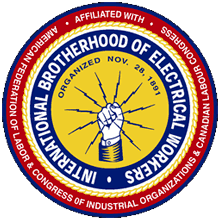The 2017 Milliman Medical Index noted that medical expenditures (inpatient, outpatient, and professional) made up about 80% of the total cost of healthcare for a family of four, and that nationally the cost increases from 2016 to 2017 were about 4%. However, many employer plans have experienced much higher cost increases, especially in certain areas of the country. In 2016, for the first time, independent physicians made up less than half of the practicing physicians in the United States, according to an American Medical Association (AMA) study. Physicians who work with hospitals charge a facility price at their offices, which could result in increases in costs and significant discrepancies in prices for the same services. Additionally, hospitals have continued to merge with each other, and while these mergers offer the potential for lower costs by increasing efficiencies, a 2016 study by Northwestern University, Harvard University, and Columbia University found that prices at merging hospitals actually increased 7% to 10% if the hospitals that merged were within the same state. Given these factors, along with general price inflation and increased utilization, plan sponsors should consider ways to mitigate costs using any or all of the strategies below.
professional) made up about 80% of the total cost of healthcare for a family of four, and that nationally the cost increases from 2016 to 2017 were about 4%. However, many employer plans have experienced much higher cost increases, especially in certain areas of the country. In 2016, for the first time, independent physicians made up less than half of the practicing physicians in the United States, according to an American Medical Association (AMA) study. Physicians who work with hospitals charge a facility price at their offices, which could result in increases in costs and significant discrepancies in prices for the same services. Additionally, hospitals have continued to merge with each other, and while these mergers offer the potential for lower costs by increasing efficiencies, a 2016 study by Northwestern University, Harvard University, and Columbia University found that prices at merging hospitals actually increased 7% to 10% if the hospitals that merged were within the same state. Given these factors, along with general price inflation and increased utilization, plan sponsors should consider ways to mitigate costs using any or all of the strategies below.
Price transparency and quality
Providing price transparency, coupled with information on quality of care, is a way to promote consumerism within a health plan so that both the plan sponsor and the members who are receiving benefits can save costs. There are various vendors that offer plan sponsors and members the ability to “shop” for surgical procedures and doctors based on price and quality metrics. Cost and quality advantages can result from steering members to specialized “Centers of Excellence” for a given procedure.. Members can be incentivized to choose the lower-cost facilities or physicians (without sacrificing quality) through a reduction or elimination of member cost–sharing, or even with rebates (that is, the plan will “pay” the member to choose a lower-cost alternative).
Narrow networks and carve-outs
Another way to steer members toward cost-effective facilities is through the use of a narrow network. Most health plans offer a narrow network option (for both insured and self-insured plans), which limits member access to a smaller pool of doctors and hospitals within their larger networks. The narrow (or preferred) network promises better discounts on claims than regular in-network claims, and the plan sponsor can encourage members to use these facilities by reducing member cost-sharing within the narrow network. The plan is designed to have an additional tier of cost-sharing, with the preferred network having the lowest member cost-share. Furthermore, plan sponsors with direct contracts can consider carving out a particular facility from in-network if the facility is not a cost-effective, high-quality option (and there are other options available to the members).
Alternative payment strategies
In addition to steering members through plan design and incentives, certain plan sponsors can look to alternative payment strategies to further control costs while ensuring that quality of service does not suffer. For example, a bundled payment can be used in place of fee-for-service for certain procedures with predictable episodes of care (e.g., total joint replacement). The plan sponsor pays the same amount regardless of days spent in the hospital or rehab visits, which can help to reduce unnecessary services. A plan sponsor can also enter into a shared savings arrangement with a group of providers, such as an accountable care organization (ACO). An ACO is a group of doctors and hospitals whose focus is on providing coordinated care to certain members within a plan. Ideally, the main goal of both the ACO and the plan is to keep costs low without sacrificing quality. If successful, both share in the savings achieved. Plans with a large enough membership can enter into these alternative payment strategies on their own; for smaller plans, they may be able to contract through their insurance carrier or third-party administrator.
David Stoddard is a consulting actuary in Milliman’s Little Falls, New Jersey office. David specializes in Taft Hartley multiemployer health and welfare plans. He can be reached at (646) 473-3213, or by email at: david.stoddard@milliman.com.



